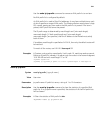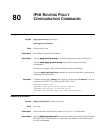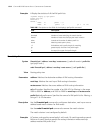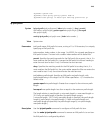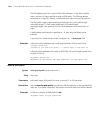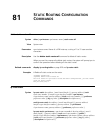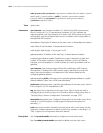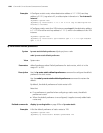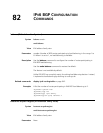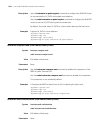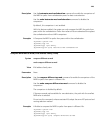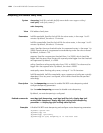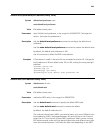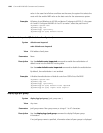1219
When configuring a unicast static route, note that:
1 If the destination IP address and the mask are both 0.0.0.0, the configured route is
a default route. If routing table searching fails, the router will use the default route
for packet forwarding.
2 Different route management policies can be implemented for different route
preference configurations. For example, specifying the same preference for
different routes to the same destination address enables load sharing, while
specifying different preferences for these routes enables route backup.
3 When configuring a static route, you can specify the output interface or the next
hop address based on the actual requirement. Note that the next hop address
must not be the IP address of the local interface; otherwise, the route
configuration will not take effect. For interfaces that support network address to
link layer address resolution or point-to-point interfaces, you can specify the
output interface or next hop address. When specifying the output interface, note
that:
■ For a NULL0 or loopback interface, if the output interface has already been
configured, there is no need to configure the next hop address.
■ For point-to-point interfaces, you can specify the output interface if you do not
know the peer address. Thus, there is no need to change the router’s
configuration even if the peer address is changed. A PPP interface obtains the
peer’s IP address through PPP negotiation. In this case, you need only specify
the output interface.
■ For NBMA and P2MP interfaces, which support point-to-multipoint networks,
the IP address to link layer address mapping must be established in addition to
IP route configuration. In general, it is recommended to configure the next hop
IP address when you configure the output interface.
■ It is not recommended to specify a broadcast interface (such as an Ethernet
interface, virtual template, or VLAN interface) as the output interface for a
static route, because a broadcast interface may have multiple next hops. If you
have to do so, you must specify the corresponding next hop of the interface at
the same time.
Related commands: display ip routing-table on page 929 and ip route-static default-preference.
n
■ The static route does not take effect if you specify its next hop address first and
then configure the address as the IP address of a local interface, such as
Ethernet interface and VLAN interface.
■ To configure track monitoring for an existing static route, simply associate the
static route with a track entry. For a non-existent static route, configure it and
associate it with a Track entry.
■ If the track module uses NQA to detect the reachability of the private network
static route’s nexthop, the VPN instance number of the static route’s nexthop
must be identical to that configured in the NQA test group.
■ If a static route needs route recursion, the associated track entry must monitor
the nexthop of the recursive route instead of that of the static route;
otherwise, a valid route may be mistakenly considered invalid.



